Most travelers overlook Nicaragua, rushing past this Central American country toward more famous destinations. What they’re missing is extraordinary. Nicaragua offers some of the continent’s wildest adventures, where active volcanoes bubble with molten lava, pristine crater lakes reflect jungle canopies, and surf breaks roll onto empty beaches.
You can volcano board down active slopes, dive pristine Caribbean reefs where nurse sharks glide below, and sleep in cloud forests where howler monkeys serve as your alarm clock. From jungle rivers to off-grid islands, these places to visit in Nicaragua immerse you in landscapes that feel genuinely untouched.
Here’s our ultimate roundup of Nicaragua’s wildest destinations.
Need help planning your dream trip to Central or South America? We’re here to help. Our itineraries are 100% customizable and include exclusive perks. Get in touch to learn more today.
Masaya Volcano and Laguna de Apoyo
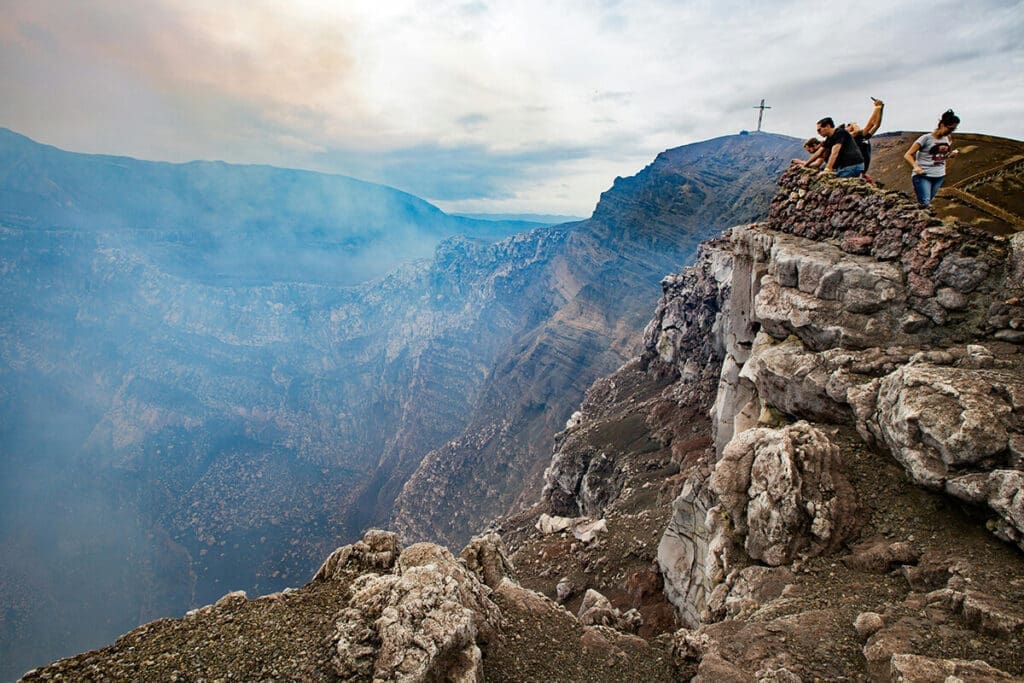
Masaya Volcano gives you front-row seats to one of the world’s most accessible active craters. Drive right to the rim and peer into the molten heart of Santiago crater, where lava glows against dark volcanic walls.
After witnessing the volcano’s power, cool off at nearby Laguna de Apoyo. This pristine crater lake formed 23,000 years ago when a massive volcanic explosion left behind a perfectly circular basin. The water stays warm year-round, fed by underground thermal springs. Swim in water so clear you can see 40 feet down, surrounded by steep crater walls draped in tropical forest.
Local families run simple lakeside restaurants where you can eat fresh fish while howler monkeys call from the trees above. The contrast between fire and water captures Nicaragua’s wild essence perfectly.
Rancho Santana
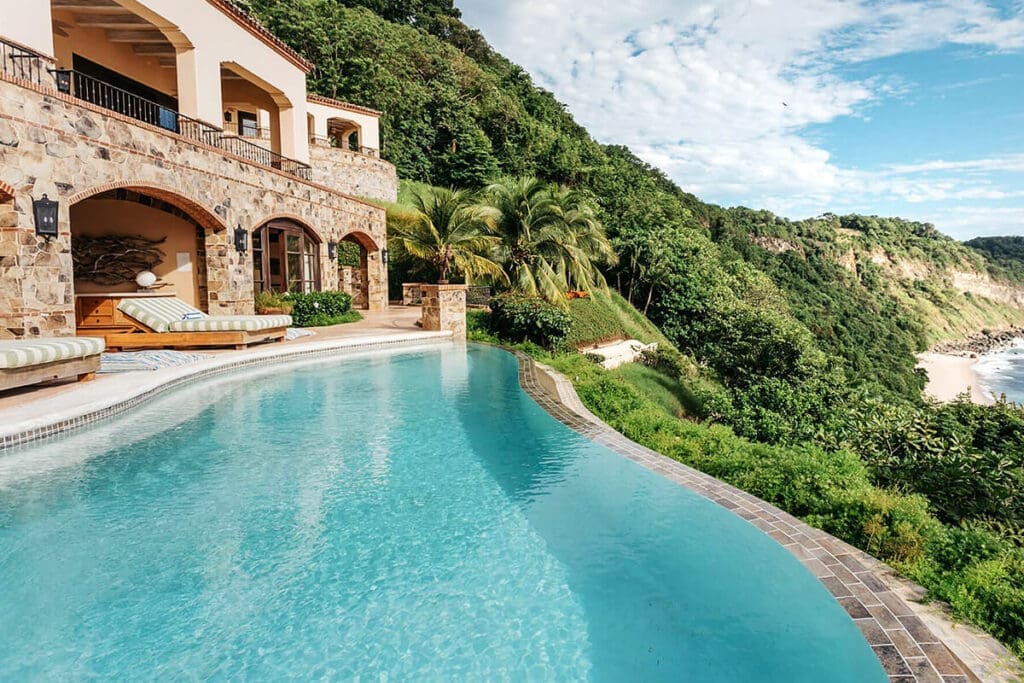
Rancho Santana sprawls across 2,700 acres of Nicaragua’s Pacific coast, offering five beaches, rolling hills, and encounters with wildlife that feel completely natural. This isn’t manicured resort territory. Coatis wander the grounds, howler monkeys wake you at dawn, and iguanas sun themselves on stone walls.
We love Rancho Santana, and our clients always rave about it, because you get five completely different beaches within one property – from gentle family swimming spots to challenging surf breaks – so you never have to search for things to do in Nicaragua. Playa Santana offers gentle waves perfect for swimming, while Playa Rosada delivers powerful surf breaks. Playa Escondida lives up to its name, requiring a hike through dry forest to reach its secluded sands.
Accommodation options range from oceanfront casitas with private terraces to hillside villas overlooking multiple beaches. Each property blends contemporary comfort with natural materials, featuring private pools, gourmet kitchens, and outdoor living spaces designed for tropical living. World-class surf breaks sit right outside your door, while wellness amenities like spa treatments and yoga sessions help you unwind after days of adventure. Family-friendly activities include horseback riding, nature walks, and protected swimming beaches perfect for children.
Ometepe Island (Isla de Ometepe)
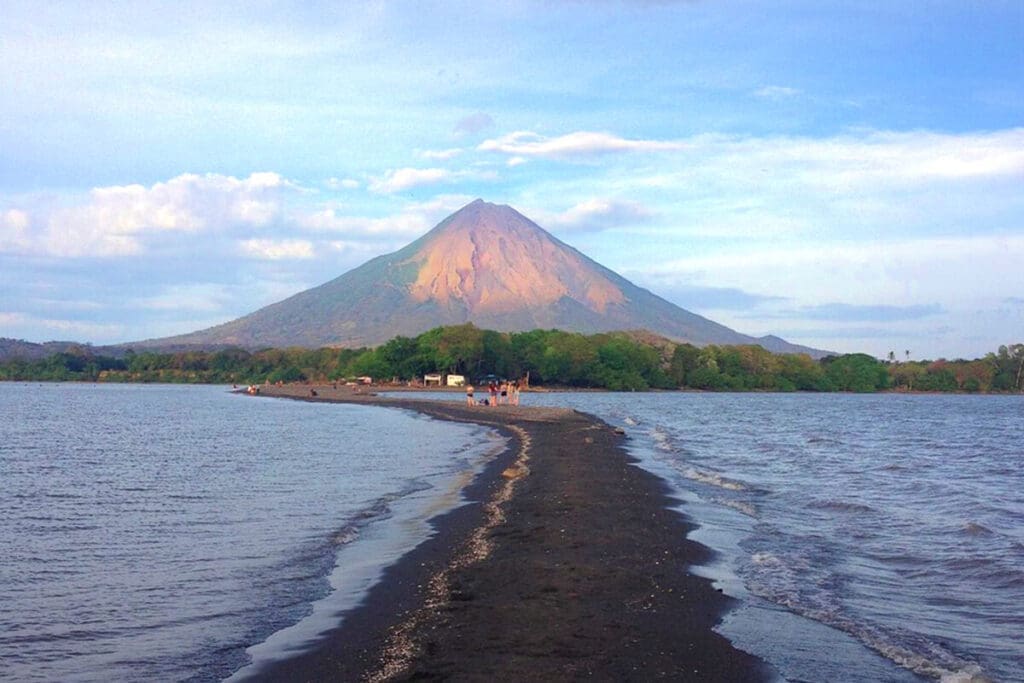
One of Central America’s most unique attractions, Ometepe Island is a must-include on any Nicaragua travel guide. Formed by two volcano peaks that rise from Lake Nicaragua, Ometepe Island is one of the most dramatic landscapes in Central America. It’s also a perfect example of why Nicaragua is called The Land of Lakes and Volcanoes!
Volcán Concepción towers 5,282 feet above the lake, its cone shape reflected in dark waters. Maderas volcano, though smaller, rewards hikers with a cloud forest summit and hidden crater lake.
The island feels like a world apart. Petroglyphs carved by pre-Columbian peoples dot the landscape. Howler monkeys crash through canopy branches while white-faced capuchins watch curiously from roadside trees. Local farmers still use oxcarts to transport crops along dusty roads.
Hiking Concepción challenges even experienced trekkers with steep, loose volcanic rock and changing weather. The Maderas trek offers better wildlife viewing through coffee plantations and dense forest. Hike to the summit, where a jade-green lagoon sits perfectly in the volcanic crater.
Swimming in Lake Nicaragua adds another layer of wildness. This massive freshwater lake hosts bull sharks that have adapted to fresh water, though encounters remain extremely rare.
Somoto Canyon and Estelí Highlands
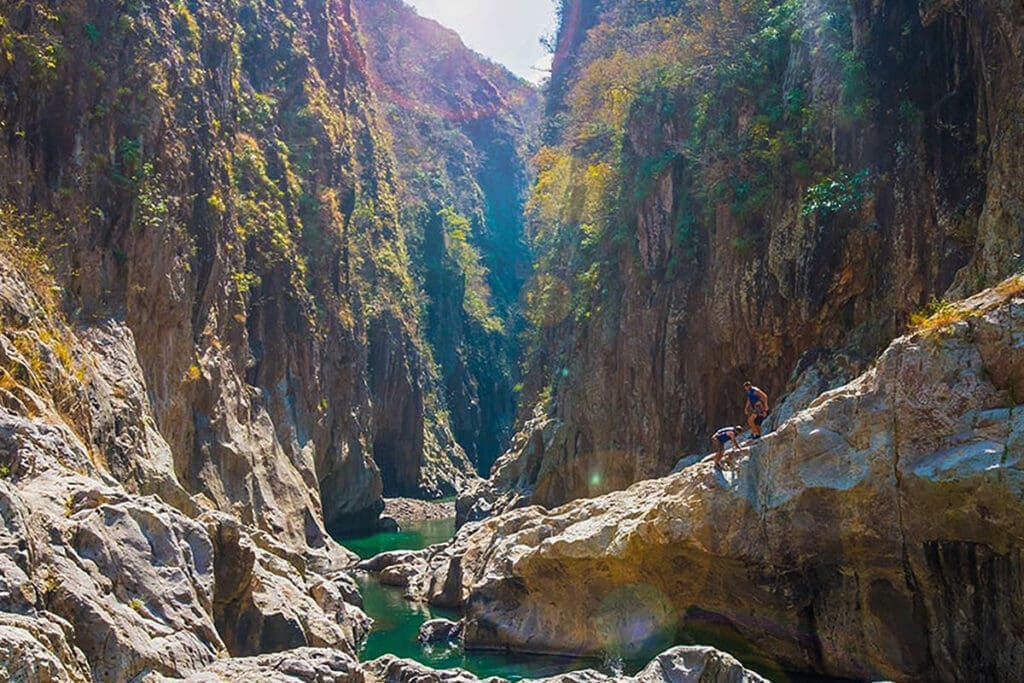
Somoto Canyon slices through northern Nicaragua like a hidden geological secret. The Coco River carved this narrow gorge through limestone over millions of years, creating towering walls that rise 400 feet above the water. You explore by swimming, floating, and scrambling over smooth rock formations.
The surrounding Estelí highlands offer one of the best places for a completely different wild experience. Pine forests grow on mountain slopes, creating cool microclimates where orchids bloom in hidden valleys. Coffee farms terrace steep hillsides, and morning mist clings to ridgelines like something from a fairy tale.
Local guides from indigenous communities share knowledge passed down through generations. They point out medicinal plants, demonstrate traditional farming techniques, and tell stories that connect landscape with culture.
Mombacho Volcano and Granada

Mombacho Volcano rises directly from Lake Nicaragua’s shore, its cloud forest summit creating a biological island above the surrounding dry forest. Four hiking trails wind through this unique ecosystem, where constant mist supports orchids, bromeliads, and trees draped in moss.
Coffee grown on Mombacho’s slopes produces some of Nicaragua’s finest beans. The volcanic soil and cool mountain climate create ideal growing conditions. Many farms offer tours that combine nature walks with coffee tastings.
Granada, nestled at Mombacho’s base, provides the perfect launching point for volcano adventures. This colonial city preserves Spanish architecture while serving as a gateway to wild places. After a day in the cloud forest, return to cobblestone streets and centuries-old churches for a striking contrast between civilization and wilderness. There are so many things to do in Granada, it’s one of the top places to visit in Nicaragua for families, couples, and solo travelers alike.
San Juan del Sur
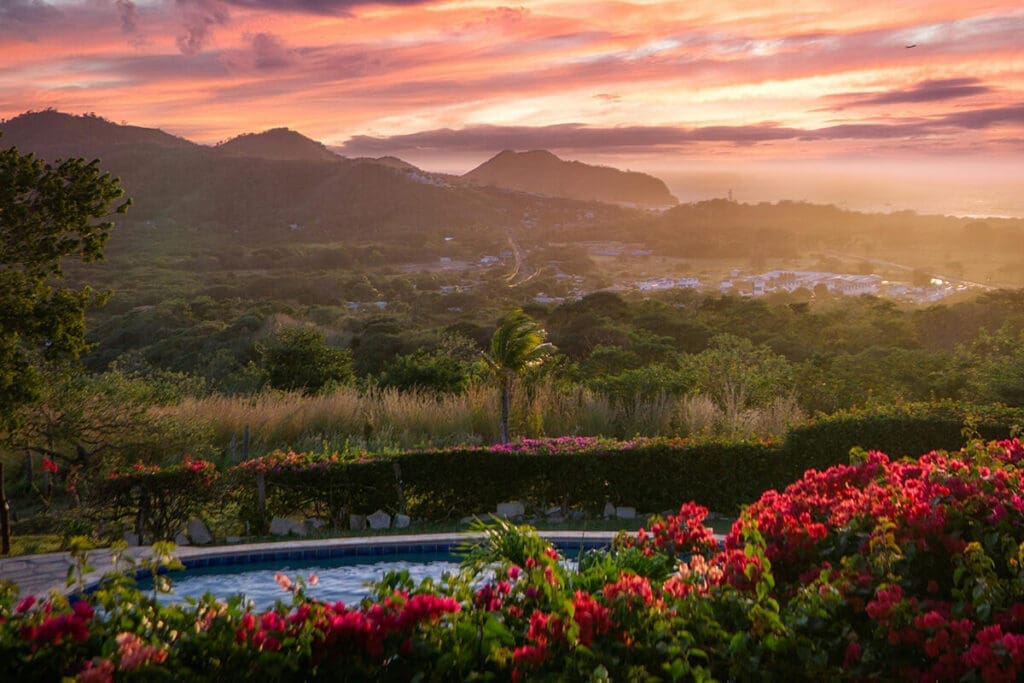
San Juan del Sur curves around a horseshoe bay where fishing boats bob alongside surfboards. The town maintains its fishing village character despite growing popularity with surfers and some of the best beaches in the country.
The surfing here ranges from beginner-friendly beach breaks to powerful reef breaks that challenge experienced surfers. Playa Maderas, just north of town, offers consistent waves and a laid-back vibe. Further south, Playa Hermosa lives up to its name with pristine sand and excellent surf.
Wildlife encounters happen naturally throughout the area. Olive ridley sea turtles nest on nearby beaches during arribada events, when hundreds of turtles come ashore simultaneously. Whales migrate through offshore waters between December and April, often visible from shore.
Little Corn Island
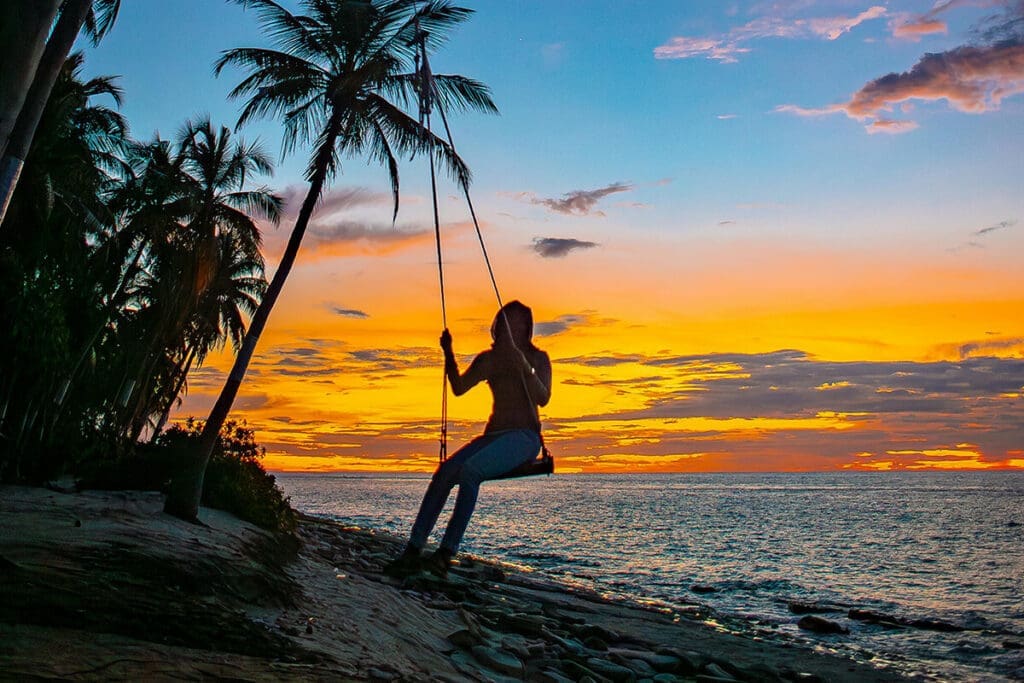
Little Corn Island exists in beautiful isolation 43 miles off Nicaragua’s Caribbean coast. No cars disturb the peace on this two-square-mile island. Golf carts and bicycles provide the only motorized transport, while most people simply walk the sandy paths that connect small communities.
The island sits surrounded by some of the Caribbean’s healthiest coral reefs. Diving here reveals an underwater world where nurse sharks glide gracefully through crystal-clear water while schools of tropical fish create moving walls of color. The reefs drop dramatically from shallow gardens of staghorn coral to deep walls covered in sponges and soft corals. Sea turtles nest on remote beaches and cruise the reefs year-round, while rays bury themselves in sandy bottoms just offshore.
Accommodations range from simple beachfront cabins to eco-lodges that generate their own power and harvest rainwater. Most places serve fresh lobster, crab, and fish caught by local fishermen who still use traditional methods.
León and Volcano Boarding
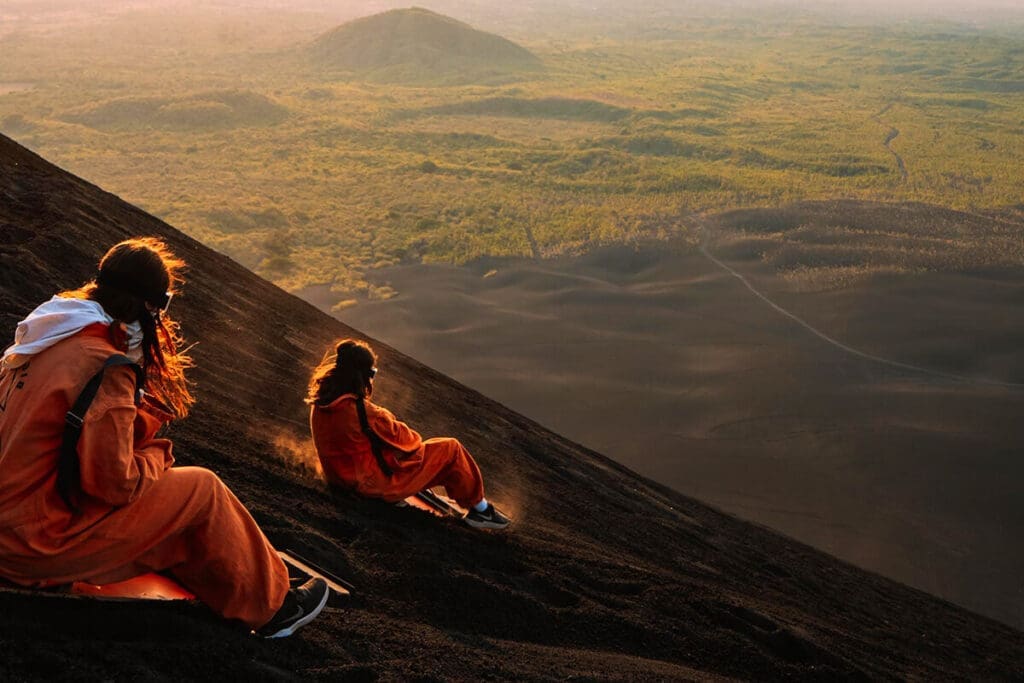
León combines colonial architecture with proximity to some of Nicaragua’s most active volcanoes making it a must when visiting Nicaragua. The city’s is home to the largest cathedral in Central America, anchors a historic center filled with revolutionary murals and student energy from the national university.
Cerro Negro volcano, just 45 minutes from León, offers the world’s only volcano boarding experience. This young volcanic cone, formed in 1850, consists entirely of loose volcanic rock perfect for sliding. After hiking to the 2,388-foot summit, you strap on protective gear and surf down the steep slope on wooden boards.
Other volcanoes near León offer different adventures. Telica volcano glows red at night when viewed from the rim, while San Cristóbal, Nicaragua’s highest peak, challenges serious hikers with a demanding climb through varied ecosystems.
Jicaro Island
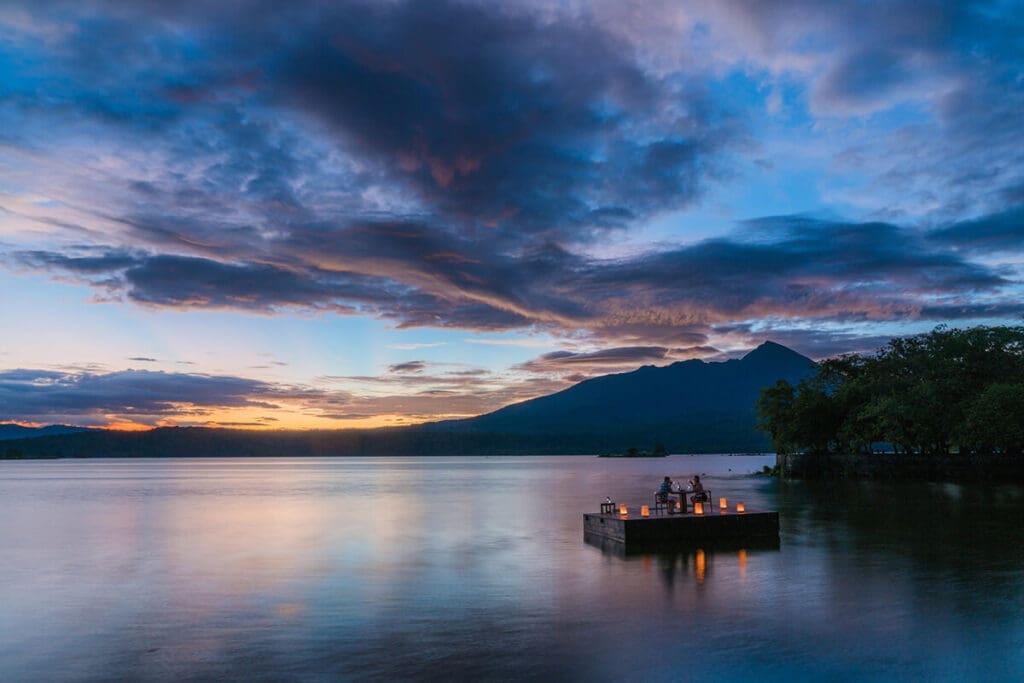
Jicaro Island floats like a green jewel in Lake Nicaragua, offering luxury that harmonizes completely with wild surroundings. This private island retreat consists of nine casitas built with local materials and designed to blend into the tropical forest landscape.
Each casita sits on stilts among the trees, connected by elevated walkways that minimize impact on the forest floor. Open-air designs let you hear every sound from the surrounding wilderness. Howler monkeys announce dawn while parakeets chatter in nearby branches.
The island’s location provides access to multiple ecosystems. Kayak through river channels lined with mangroves where caimans sun themselves on muddy banks. Hike forest trails where three species of monkeys swing through the canopy. Fish for tarpon and snook in lake waters that stretch to distant volcanic peaks.
Activities center on wildlife observation and nature connection. Guided night walks reveal creatures that emerge after dark. Sunrise yoga sessions take place on platforms overlooking the lake. We consistently recommend Jicaro Island because it’s one of the few places where you can experience complete immersion in nature without sacrificing luxury – our clients tell us they’ve never felt so connected to wildlife while staying somewhere so beautifully designed.
Morgan’s Rock
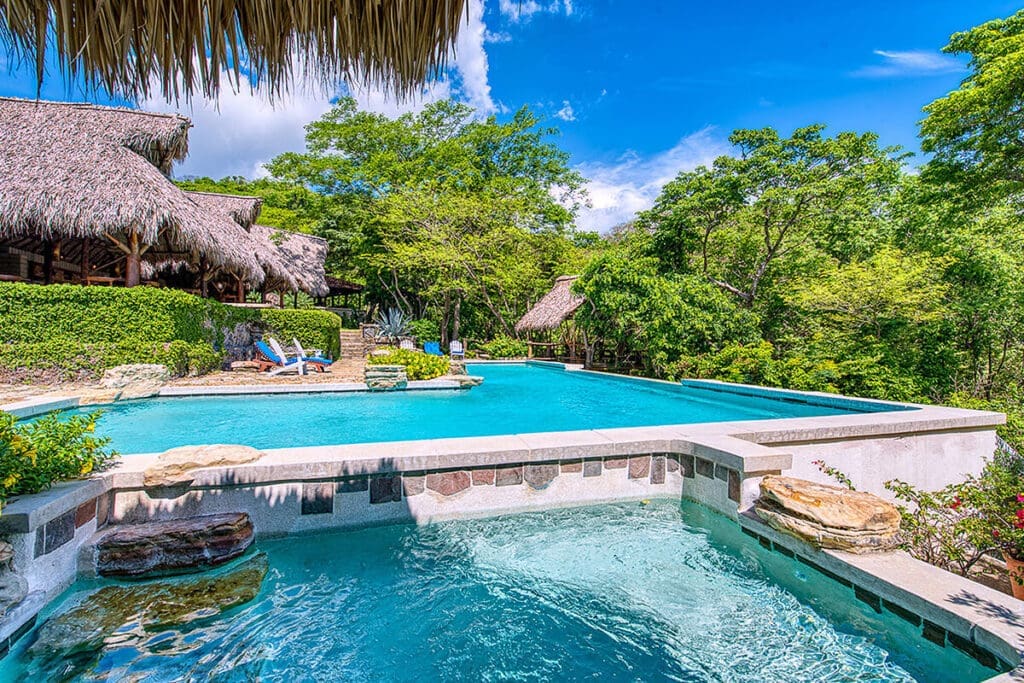
For more beautiful beaches, Morgan’s Rock protects 4,000 acres of Pacific coastline and tropical forest, creating a corridor for wildlife movement between protected areas. The reserve encompasses beaches where four species of sea turtles nest, rivers that support healthy fish populations, and forest trails where jaguars leave tracks in muddy soil.
Fifteen bungalows built from sustainable materials sit elevated among the trees, designed to minimize environmental impact while maximizing wildlife viewing opportunities. Each bungalow offers ocean or forest views, often both, with private terraces perfect for watching monkeys feed in nearby branches.
The beach stretches for miles with no other development visible. Olive ridley turtles nest here year-round, with peak activity during rainy season. Guided night walks during nesting season provide chances to witness ancient rituals that have continued for millions of years.
Planning the Best Places to Visit in Nicaragua for You
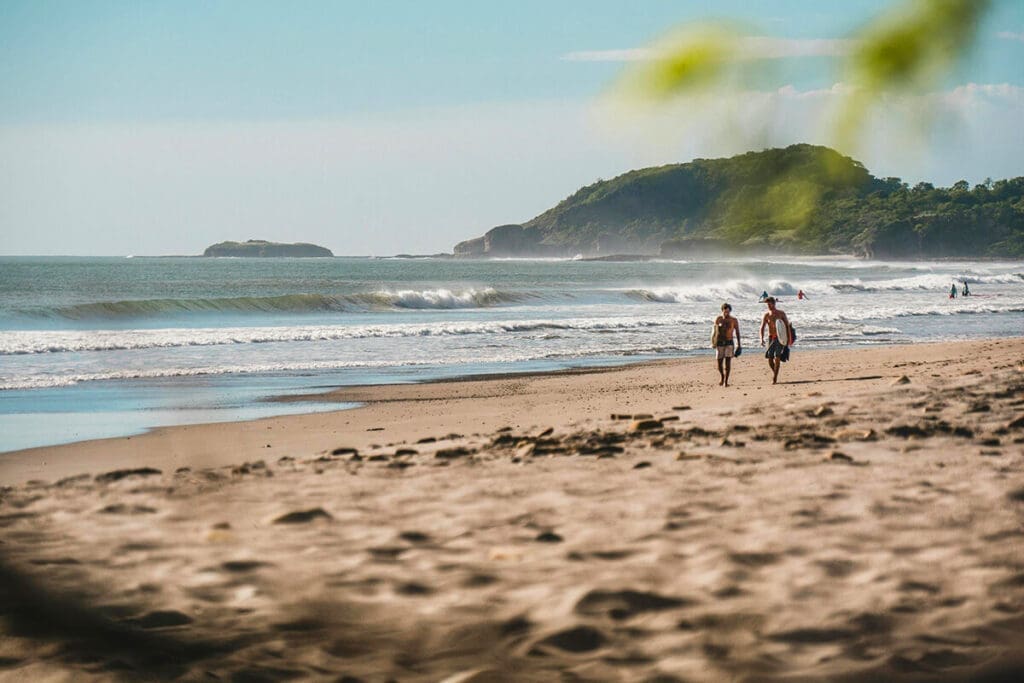
Nicaragua’s wild places reward travelers who embrace adventure. And yet, with plenty of luxurious accommodations, you can experience the natural wonders of the country without sacrificing luxury. While more popular countries in Central America (like Costa Rica and Panama) are highly visited for a reason, there’s a special allure to Nicaragua’s dramatic landscapes and colonial cities.
Fast Facts About Visiting Nicaragua
The dry season from December to April offers the most reliable weather for outdoor activities, though the landscape appears more brown and dusty. Rainy season from May to November brings lush green scenery and active wildlife.
Many wild places require some combination of domestic flights, boat transfers, and four-wheel-drive vehicles to reach. This remoteness preserves their untouched character but requires flexibility and patience from visitors. We can always assist with travel planning to ensure your transportation is seamless.
Whether you choose to surf volcanic slopes, swim in crater lakes, or sleep among howler monkeys, Nicaragua offers wild experiences that leave lasting impressions.
Inspired to visit Nicaragua? We specialize in crafting personalized Central and South America adventures, complete with exclusive experiences you won’t find elsewhere. Let’s chat about your dream trip.
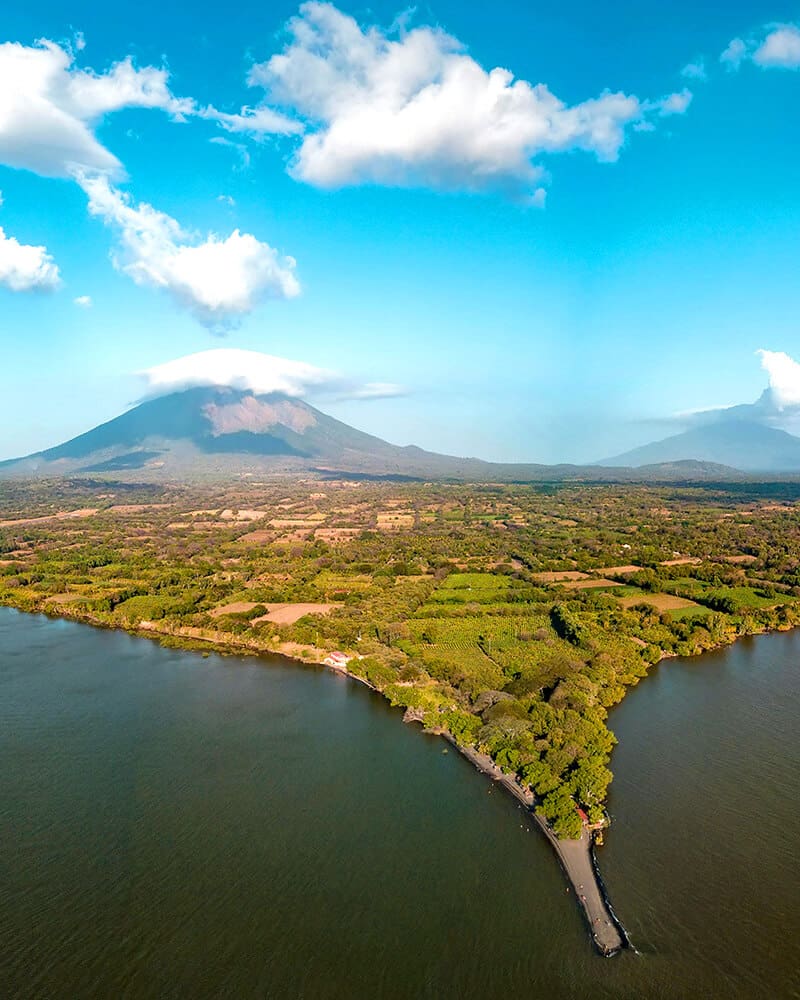
+ show Comments
- Hide Comments
add a comment